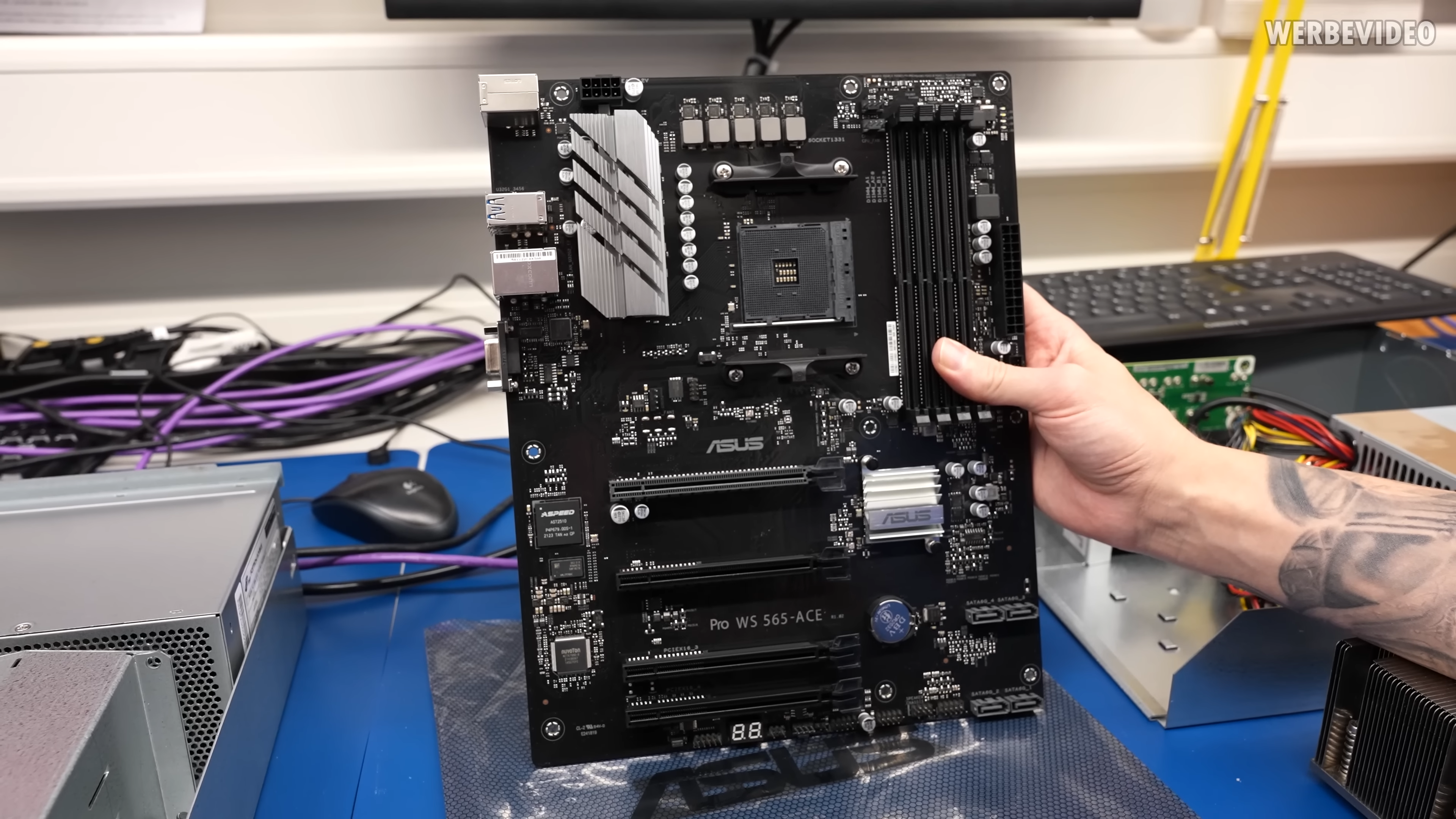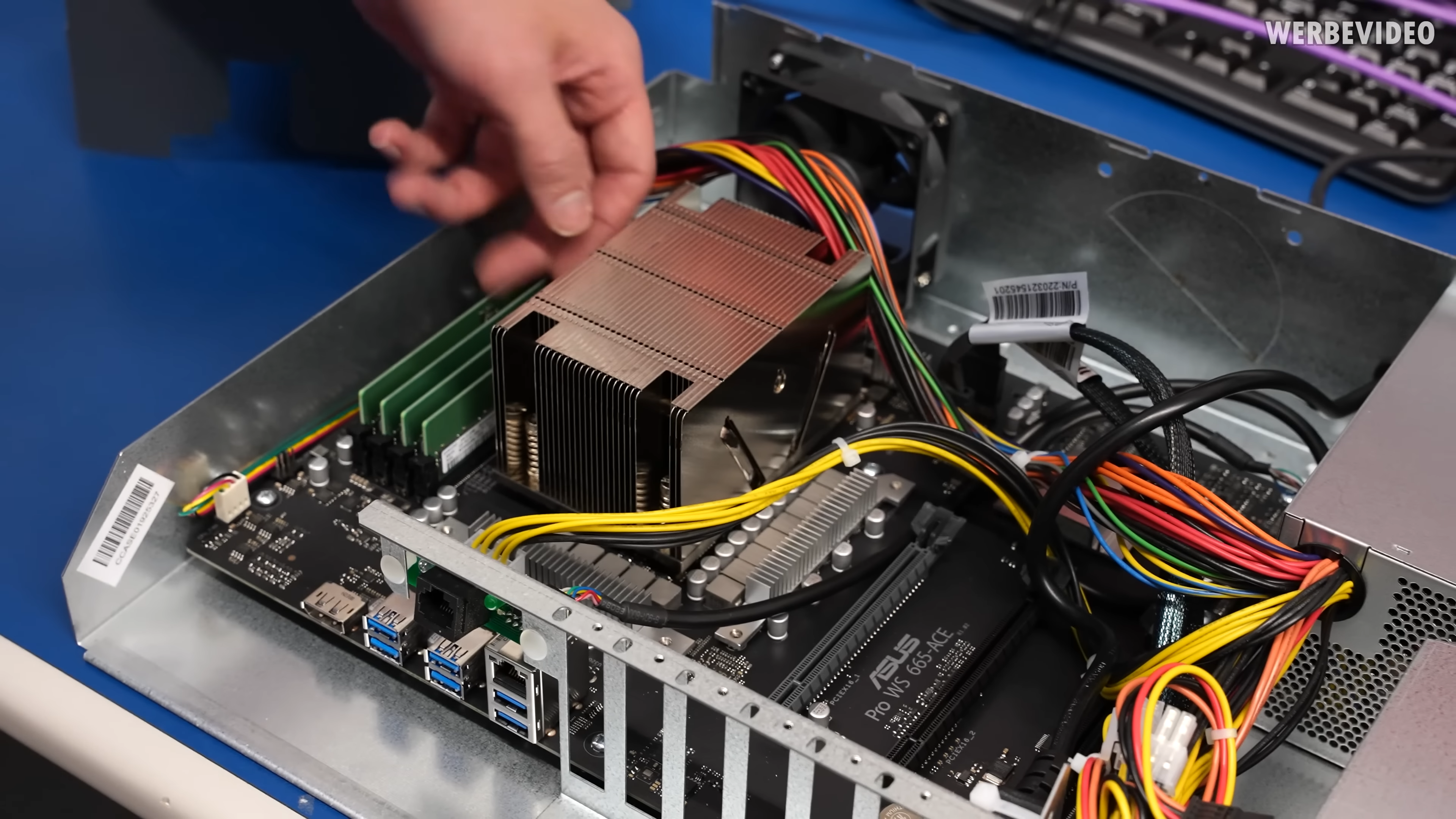
YouTuber Der8auer has shown off a pair of new AMD AM5-based B665 workstation motherboards featuring a 90-degree socket orientation, designed to improve airflow and improve compatibility with server-based CPU coolers and chassis. The two new boards are the Asus Pro WS B665-ACE and Asrock Rack B665 D4U1L.
We don't know anything about this new B665 socket, or much about these new boards in general. But Der8auer says these are value-oriented workstation motherboards, with a minimal amount of features. At the very least we know they will support AMD's 65W Ryzen 7000 series CPUs.
Based on the images of both motherboards, they appear to be cut-down versions of B650 chipset motherboards. The rear I/O has been significantly cut back to save cost, and a VGA port has been added for server purposes. Both boards also have cut back PCIe connectivity from Gen 5 to Gen 4, however, according to Der8auer, this appears to be a board-specific limitation, again to cut back cost, and isn't a limitation of the chipset. The Asus board is an ATX solution, while the ASRock board is a micro-ATX solution.

The most unique aspect of both boards is the 90-degree orientation of the AM5 socket, which is only common on server platforms and workstation platforms such as the Xeon W3400 series or Threadripper Pro.
The 90-degree orientation is unusual for consumer platforms, but it's highly opportunistic for server cooling solutions and chassis, where most of these boards will probably live. The 90-degree rotation means elongated server-class heatsinks can be used, featuring fins that extended outwards by a few more mm compared to standard coolers. This allows the air to stay in the heatsink fins for longer, and extract more heat from the fin stack, reducing temperatures by two or three Celsius.
Another cooling benefit of the 90-degree rotation is the repositioning of the DDR5 DIMM slots from the side to the top of the board. This opens up airflow from the chassis' intake toward the CPU heatsink, and also cools the DDR5 memory better since the air travels through the gaps in the modules vertically instead of passing over them horizontally.

Der8auer demonstrated this capability, with the Asus B665 board housed inside a Hetzner AX52 server rackmount chassis. The 90-degree orientation allowed an elongated server heatsink to be used, and the rear exhaust fan was able to pull air directly into the heatsink fins perfectly. If you are unfamiliar with rackmount servers, the chassis fans are designed to cool both the chassis and the heatsink itself. Negating the need for dedicated chassis fans and CPU cooling fans.
This type of cooling metrology will be great for systems that utilize these consumer-based workstation motherboards. Motherboard manufacturers have been producing workstation motherboards for Intel and AMD's consumer platforms for years as an alternate solution to more expensive and dedicated server hardware. This is great for small workstations or server applications that don't necessarily require all the features or horsepower of a Xeon or AMD EPYC processor.







